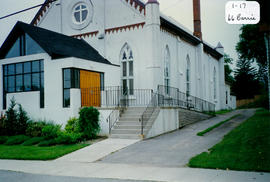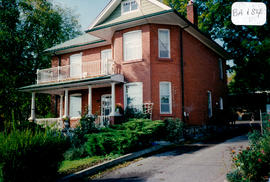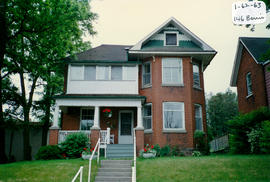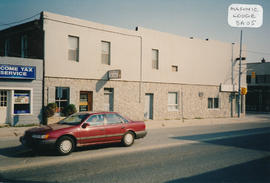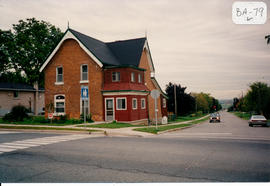66 Barrie Street Bradford United Church
- CA BWGPL GJ-HB-2017-03-08-07
- Item
- 1996
Parte de George Jackson fonds
Bradford United Church is located at 66 Barrie St. The structure in this photo was built in 1865 in the Gothic Revival style. There was an original church built on this site in 1851.
The 1½-storey building has a rectangular plan, tall and narrow window openings, and a steeply-pitched, gable roof. The enclosed narthex is a recent addition. It is not considered to be consistent with the original style. Tall, gothic-style, trefoil arched openings light the nave. A round, rose window (with muntins set in the shape of a cross) is set into the gable portion of the façade. These cross-shaped muntins replace the original four-leaf clover muntins. The vergeboard has small, gothic arches. Octagonal pinnacles are found at each of the four corners. These pinnacles were originally topped with ornamental spires. Shallow buttresses extending the full height of the façade divide it into three parts. The trefoil arch and the three-part façade refer to the Trinity. There is brick masonry construction with stucco cladding and a parged, stone foundation. The original dichromatic brick cladding is concealed under the stucco cladding. Originally, the underlying red brick walls had buff-coloured brick buttresses and framing at the door and window openings. According to the 2000 inventory, the building is in good condition with some original features. (1, 3, 4)
Sem título

